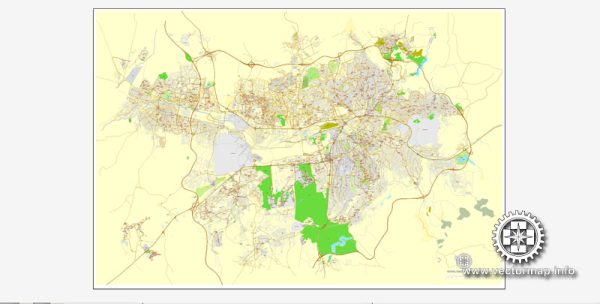Ankara, the capital city of Turkey, has a rich history of urban development that spans thousands of years. Here is a brief description of its history of urban development:
- Ancient Times: The history of Ankara dates back to the Bronze Age, with the area being inhabited by various civilizations such as the Hittites, Phrygians, and Galatians. The city was known as Ancyra during Roman times and was an important crossroads in the Roman road network.
- Byzantine Era: After the Roman Empire, Ankara became part of the Byzantine Empire. During this period, the city’s importance waned, and it faced several invasions and changes of hands.
- Medieval Period: In the 7th century, Ankara was captured by the Arab Caliphate, and it changed hands several times between different empires, including the Byzantines and Seljuk Turks.
- Seljuk Era: The Seljuk Turks captured Ankara in the 11th century and made it the capital of the Sultanate of Rum. During this time, the city experienced significant growth and development, with the construction of many mosques, caravanserais, and other architectural marvels.
- Ottoman Empire: In the 14th century, the Ottoman Empire captured Ankara, and it remained a provincial city throughout most of the Ottoman period. It was known for its historical and cultural significance but did not serve as a major political or economic center.
- Turkish Republic: Ankara’s urban development took a new turn when it was declared the capital of the newly established Turkish Republic in 1923. Under the leadership of Mustafa Kemal Atatürk, Ankara was chosen as the capital due to its central location and the desire to create a more modern and centralized government. The city underwent a significant transformation during this period, with the construction of government buildings, embassies, and modern infrastructure.
- 20th Century and Beyond: Ankara continued to grow and develop throughout the 20th century, with a focus on modern urban planning and infrastructure. The city expanded with the construction of wide boulevards, government buildings, and residential areas.
- Contemporary Development: In recent years, Ankara has seen further urban development, with the construction of modern commercial and residential complexes, as well as the expansion of its transportation network, including a subway system and a high-speed train connection to other major cities in Turkey.
Ankara’s history of urban development reflects its transformation from an ancient city with a rich cultural heritage into a modern capital that plays a pivotal role in the political and administrative life of Turkey. The city’s historical sites, modern infrastructure, and cultural diversity make it a fascinating place to explore for both residents and visitors.


 Author: Kirill Shrayber, Ph.D.
Author: Kirill Shrayber, Ph.D.